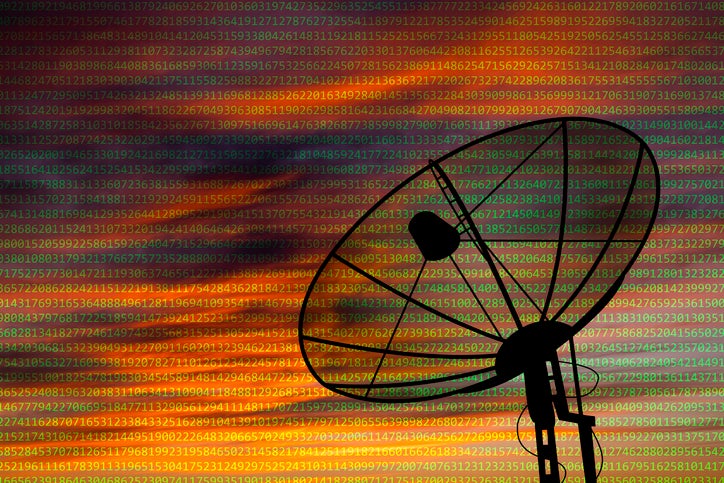
Satellite Hack: BAE Systems Warns of Major Attack
Tensions in the terrestrial domains and accessibility to space will likely provide influencing factors in the first major attack a satellite within the next 12 month, according to senior industry and sector officials.
According to Neil Sherwin-Peddie, head of space security for BAE Systems Digital Intelligence, their forecast for 2023 is driven by the “key step change” observed since the beginning of the war in Ukraine and the attack against the ViaSat network.
Sherwin-Peddie, who sits as chair for the Space Security Information Exchange (SSIE), also considered reports appearing toward the end of 2022 of potential attacks against systems like Starlink, “with threats relating to physical compromise, i.e., having a missile strike shot at them, potentially by hostile actors.
“In 2023, the focus will continue to shift towards satellite compromise, with the first major satellite hack to be expected in the next twelve months.”
“The probability of a hack is larger than the chance that no satellite will be hacked, just because that’s the nature of the beast.”
Professor Dan Blumberg, Chairman of the Israeli Space Agency
The chairman of the Israel Space Agency, Professor Dan Blumberg, concurs with this premise: “The probability of a hack is larger than the chance that no satellite will be hacked, just because that’s the nature of the beast.
“We have more and more devices, they influence more aspects of our lives. It doesn’t mean it’s going to be a malicious attack, but there are going to be those people that will want to try, try their luck, try to attack.
“There might be also malicious attacks. The chance for that is also growing as tensions, global tensions grow, and we’ve seen that recently with the Ukrainian war. I certainly agree that there is a high risk for some kind of an attack.”
Sherwin-Peddie explains that the mode of attack for a successful hack would probably need to utilise all three of the main attack-vectors: ground, communication links, and payload hijacking.
“From the ground station perspective, it is highly possible that vulnerabilities in physical security will be targeted,” he said.
Malicious actors could potentially gain direct access to satellite and mission operations centres by taking advantage of insiders and leveraging the current crisis in the cost of living.
“This will enable them to take control of spacecraft, disable communication links or capture all earthbound transmissions,” continues Sherwin-Peddie.
Data linkage vulnerabilities
Within the low Earth orbit (LEO) market there is a growing trend toward laser technology for point-to-point transmission of data from space to Earth, to increase the rate of download from LEO satellites “up to the speed you would have on land, multiple gigabits per second rather than it being the low latency links that we see at the moment.”
At the Spacecom conference in 2022, BAE Systems announced its own programme to build out a Low-Earth Orbit (LOE) satellite capability.
In the years to come, communication connections will be a primary focus of attack. Communications from Earth to LEO via satellite are susceptible to disruption due to the frequent passage of spacecraft over potentially hostile territory.
“I’m using the term hostile territory, so it’s passing out of UK territory, and passing over somebody else’s territory. If they had the ability to detect what our satellite is up to, it is going blind it and actually stop the satellite from being able to carry out its functions.”
The adversary can use satellite blinding lasers to their advantage as these satellites pass through the area in to harvest protected data. “If security is not implemented effectively then yes, potentially that could be a risk,” said Sherwin-Peddie. “The adversary can use satellite blinding as these satellites pass to capture critical imagery or radio frequency data.”
For point-to-point laser transmission, BAE is focusing on improvements to avoid vulnerabilities from person-in-the-middle attacks among other approaches to intercept the signal.
Satellite software vulnerabilites
The final vector of attack involves payload hijacking, the sophisticated deployment of malware to systems on the satellite. “Poorly developed DevSecOps principles could see the introduction of malware based on the reliance on COTs code bases. A lack of understanding around code and applications could allow an attacker to hide on spacecraft payload and run tasks undetected,” said Sherwin-Peddie.
At the recent CyberTech 2023 conference in Tel Aviv, Blumberg, who is also a member of the International Academy of Astronautics, reflected on the risks satellite software systems from the ‘conservative’ attitude within the space industry.
“The space industry, as I said when I started off, is very slow in changing…You can still find a lot of Fortran software on spacecrafts, things that haven’t been modified for dozens of years, operating systems that are old, all of that is not defined for the common era of cybersecurity.”
Fortran is a programming language developed by IBM in the 1950’s for scientific and engineering applications, once described in a 1968 journal article for Science as ‘old-fashioned’ by the authors of BASIC. “New spacecraft often use 486 CPUs,” said Blumberg, speaking of the Intel 486 microprocessor, that was introduced in 1989. “That’s accessible. That’s a risk.”








